How Canadian Businesses Can Run a Water Audit

In the case of water use, implementing water audits is important to avoid surprises. Especially when businesses find they are using more water than they should by losing control of their efficiency, not monitoring possible leaks, overuse, outdated equipment, and pressure, for example. According to GreenMatch, around 30% of treated water is wasted globally, translating to roughly 9.5 trillion litres. Waste can be everywhere, and understanding (through an audit) how water moves through a facility often reveals other inefficiencies, such as excess energy use or unnecessary downtime.
Regardless of the niche, industrial or commercial businesses aim to deliver high-quality services or products to their customers and be recognized as a reference in the segment in terms of credibility and worth. However, the more the company grows, the more challenging to monitor internal demands.
How costly is industrial water use? What is the water quality? Is the equipment in ideal conditions? Is the water use efficient, or is the company wasting water? Is the water contaminated? Where are the meters installed? These questions, and even more, are answered via a water audit, which intends to suggest internal improvements to help with water saving, equipment, safety, regulations, and quality.
The benefits of a water usage audits
The audit is an internal analysis based on facts and data, where everything, from equipment quality and safety to water contamination and use, will be validated. Here are some of the main topics to be considered:
- Cost Reduction on Utility Bills – Large companies have large bills for water. Therefore, identifying unnecessary use, leaks, waste, and many other issues through a water audit can reduce costs not just on water, but on energy as well, as heating, pumping, and treating less water decreases energy consumption.
- Better Efficiency – Each internal process related to water use is analyzed to check the efficiency and the equipment quality. The audit also promotes maintenance practices to guide the company on how to detect possible problems earlier, like leaks, system failures, overuse, and pressure.
- Aware of Regulations – As each province has its regulations on water use, it is important to follow all the requirements to be always on the right path and ready for inspections. This behaviour reduces the risks of fines or penalties for noncompliance.
- Sustainability Boost – The audit exists to improve water use and decrease water waste in many ways, promoting water use reduction, decreasing environmental impacts, and supporting sustainability. Depending on the efforts, the company can be a candidate for Green Business Certificates, which can build trust in the market. In that sense, there are many green possibilities for companies.
- Upgrades – There are possibilities on the market to save on water, and the water audit can provide a factual basis for investments in effective equipment and systems, such as smart water valves or meter efficiency valves (MEV), for example. This analysis helps the business to set realistic targets and measure the progress of applied changes.
- Prevention – As water efficiency audits investigate everything related to the water use, if there are leaks or equipment that need to be fixed, they will be identified. These corrections, in time, avoid expensive future repairs when the problem can get worse.
- Water Reuse – The audit can bring ways, by checking the local community and environment, on how the company could reuse water in operations, including water cooling towers, rainwater catchment systems, grey water for irrigation, among others.
Cost Ranges for Industrial Water Audits in Canada
Water audit prices vary substantially according to the company’s size, demand, complexity of your operations, and other particularities:
| Audit Type | Estimated Price (CAD) |
| Comprehensive Industrial Audit | From $3,000 to $8,000 |
| Cooling Water Audit | From $3,000 to $15,000 |
| Wastewater & Effluent Audit | From $8,000 to $30,000 + |
| Water Loss/Leak Detection Audit | From $5,000 to $20,000 |
| Reuse/Recycle Feasibility Audit | From $10,000 to $15,000 |
Comprehensive Industrial Audit
This step determines the internal efficiency as a whole. It is an extensive view of the water usage, focusing on the potential risks (failures) and opportunities that would promote improvements. In summary, this stage evaluates all aspects of water use within an industrial operation, going beyond a basic analysis to deliver a full vision not only through tracking outputs, inputs and losses, but also bringing extra info as water meter analysis, billing data, gaps, wastewater, inspections, leak detections, pressure checks, process water mapping, water quality, and action plan (recommendations to be applied).
Cooling Water Audit
The cooling water audit tracks water input and output in the cooling system, evaluating discharged water, evaporation losses, makeup water, chemical use and treatments, corrosion inhibitors, temperature control, monitoring tools, eventual leaks, and promotes upgrades through each issue identified.
Wastewater & Effluent Audit
Besides evaluating the efficiency of treatment systems, this audit detects contaminations, ensures environmental regulations, and recommends water pollution reductions. The baseline of this work is monitoring the water consumption data, flow diagrams, past wastewater discharge records, flow measurement, valves, sampling analysis, compliance check, and others.
Water Loss/Leak Detection Audit
This process seeks to identify, quantify, and reduce water losses that can be caused by physical leaks in pipes, tanks, meter inaccuracies, tampering, unmetered usage, and others. To find this possible waste, the audit company can use data analysis and various methods (acoustic sensor, thermal imaging, visual inspections, smart valve meters) to not only find the leaks, but also rank their severity.
Reuse/Recycle Water Audit
The structured assessment identifies opportunities to recover, treat, and reuse grey water or wastewater to reduce freshwater consumption. During the process, the company’s water is categorized (greywater, blackwater, process wastewater, cooling water), analyzed (quality, microbes, and nutrients) through tests, to identify opportunities for water reuse applications, and treatments if needed.
Who conducts water audits in Canada?
To start any of these audits, consulting engineers and environmental firms are required, or the process can be conducted internally by employees. In case of external companies, it is important to find one prepared to follow municipal or provincial regulations and aware of local incentive programs. Some Canadian water efficiency companies (with nationwide reach) that offer the water audit service are:
- BES Canada
- Water Conservation Company
- Aureus Solutions
- AFRY Canada
- Ecolab (Nalco Water)
- GHD Group
- RWDI
The steps of commercial water audits
The Government of Canada has a “Manual for Conducting Water Audits and Developing Water Efficiency Programs at Federal Facilities” document to guide companies during the water audit checklist. The main steps are:
Step 1: Objective and Scope
It is essential to determine the purpose of the audit. Compliance, sustainability, water savings, contamination, wastewater, or others, to define the next steps, the main goals, the expectations, specific processes, and targets.
Step 2: Audit team
It is important to include employees from operations, maintenance, and water management consultants (if necessary) to follow the audit company in the audit water steps, as they are straightening related to the company’s daily routine, demands, equipment, and environment.
Step 3: Mapping Water Use
Identifying all equipment that uses water, locating where the main water line enters and exits, the water meters or submeters used, the water infrastructure, also documenting flow rate devices installed. The mapping is also about checking equipment requirements (water type) and the business’s particularities.
Step 4: Meters
As is needed to generate data to analyze how much water the company is using to evaluate system efficiency or inefficiency, it is required to track the water meters. The utility bills (from 12 to 36 months) are also used to give a baseline of the water usage and how it fluctuates. All this info helps to identify peak usage periods.
Step 5: Inspection
Walking through the commercial water audit, observing all water usage locations, and checking for visible leaks, waste, and water-consuming fixtures, processes, meter maintenance, fire hose status, overuse, non-essential use, and malfunctioning equipment. The inspection will determine the status of everything water-related.
Step 6: Recommend Water Saving Measures
The next steps, such as fixing leaks, malfunctioning equipment, recycling water, and modifying internal processes to improve the company’s water efficiency, include fixtures, for example. In this stage, the business will get all the tips to fix the detected issues on water use.
Step 7: Estimate Savings and Report
Knowing the possibilities, by calculating the potential water and cost savings, it is a part of the action plan and the timeline implementation. Besides this information, the audit must bring all the findings, recommendations, cost-benefit analysis, and suggest how and when each change could be executed.
Step 8: Monitor
To know if the audit was efficient, the company (industry, commercial property, or any other business type) must track water consumption and compare utility bills to verify savings and, if needed, to adjust internal strategies.
Federal Programs
According to the Government of Canada, between 2005 and 2021, total water withdrawal declined by 15.8% from 40,876 million m3 of water in 2005 to 34,410 million m3 in 2021. Therefore, saving water is an environmental action. The municipal or federal programs related to water for industrial and commercial facilities are:
- Clean Water and Waste Fund Program
- Farm and Ranch Water Infrastructure Program (FRWIP)
- Retrofit Hub
- Commercial Space and Water Heating Rebate











